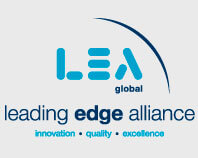On June 16, 2020 the Small Business Administration (SBA) released a revised PPP Loan Forgiveness Application, unveiled a new simplified version of the application that requires fewer calculations and documentation, and issued new guidance to reflect changes made by the Paycheck Protection Program Flexibility Act of 2020 (PPP Flexibility Act). The applications and guidance clarify what compensation is eligible for loan forgiveness and ease concerns for businesses trying to use PPP loans and have them fully forgiven. Additionally, the new streamlined application will make the loan forgiveness process much easier for borrowers eligible to use the shorter form. However, even after the release of the updated guidance there remain some unanswered questions.
The PPP Flexibility Act, signed into law on June 5, 2020, extended the period in which the funds must be spent from eight to 24 weeks, while allowing borrowers that received PPP loans before June 5, 2020 to elect to use the original eight-week covered period. The extended 24-week covered period greatly increases the ability of a borrower to accumulate sufficient eligible costs to achieve full loan forgiveness. The maximum loan was based on 2 ½ months (10 weeks) of payroll but the forgiveness can be based on 24 weeks of payroll. Therefore, even if a borrower cannot retain all its FTEs, it might still be possible to obtain 100% forgiveness.
Compensation Eligible for Loan Forgiveness
The new interim final rule issued by the SBA provides guidance on how to calculate employee and owner compensation for loan forgiveness in the new 24-week period. The updated guidance and applications confirm the following increases to the amounts of compensation eligible for loan forgiveness:
- Self-Employed Persons: If the borrower elects the eight-week covered period, the amount of owner compensation eligible for forgiveness is still eight weeks’ worth (8/52) of the individual’s 2019 net profit as reported on Schedule C, capped at $15,385. However, for the new 24-week covered period, the amount eligible for forgiveness is 2.5 months’ worth (2.5/12) of 2019 net profit, capped at $20,833. This is also how self-employed persons have calculated the maximum amount of their loans. Note: the updated guidance provides certainty for self-employed borrowers without employees choosing the 24-week covered period option as they will be guaranteed full loan forgiveness irrespective of their 2020 net profit.
- Owner-Employee or General Partner: If the 24-week covered period applies, an owner-employee or general partner’s compensation received during the Covered Period (or Alternative Payroll Covered Period) that is eligible for forgiveness cannot exceed 2.5 months of 2019 compensation, capped at $20,833 per individual; if the borrower elects the eight-week covered period, compensation eligible for forgiveness cannot exceed 8 weeks’ worth of 2019 compensation, capped at $15,385 per individual.
- Employees: The extended 24-week covered period has also increased the amount eligible for forgiveness to business owners with employees. Payroll costs including salary, wages and tips are still capped at $100,000 of annualized pay per individual, which is $15,385 ($100,000/52 * 8) if the borrower elects the eight-week covered period. However, the new maximum forgiveness cap is $46,154 ($100,000/52 * 24) per individual for the 24-week covered period.
New EZ Version of Loan Forgiveness Application
The new streamlined Form 3508EZ requires fewer calculations and less documentation than the full application, but can be used only if the borrower meets one of the following three requirements:
- The borrower is a self-employed individual, independent contractor or sole proprietor who had no employees at the time of the PPP loan application and did not include any employee salaries in the computation of average monthly payroll in the Borrower Application Form. Note: The option to use the new short form provides welcome relief to self-employed persons;
- The borrower did not reduce salary or hourly wages of any employee by more than 25% during the Covered Period (or Alternative Payroll Covered Period) compared to the period between January 1, 2020 and March 31, 2020 AND the borrower did not reduce the number of employees or the average paid hours of employees between January 1, 2020 and the end of the Covered Period (or Alternative Payroll Covered Period). (Borrowers can ignore reductions that arose from an inability to rehire individuals who were employees on February 15, 2020 if the borrower was unable to hire similarly qualified employees for unfilled positions on or before December 31, 2020, and can also ignore reductions in an employee’s hours that the borrower offered to restore and the employee refused); OR
- The borrower did not reduce annual or hourly wages of any employee by more than 25% during the Covered Period (or Alternative Payroll Covered Period) compared to the period between January 1, 2020 and March 31, 2020 AND the borrower was unable to operate during the Covered Period (or Alternative Payroll Covered Period) at the same level of business activity as before February 15, 2020, due to requirements established or guidance issued between March 1, 2020 and December 31, 2020 by the Secretary of Health and Human Services, the Director of the CDC, or OSHA, related to the maintenance of standards of sanitation, social distancing, or any other work or customary safety requirement related to COVID-19.
Questions Remain
The updated guidance and revised Loan Forgiveness Application provide much-needed clarity regarding several issues, and the new streamlined application will ease the burden of applying for loan forgiveness for many borrowers, but some unanswered questions remain:
- Timing of Applying for Loan Forgiveness: The new guidance and applications make clear that borrowers who received their PPP loans before June 5, 2020 can elect to use the original eight-week covered period to use the funds. However, if a business elects the 24-week period but uses the money in 12 weeks, for example, it is unclear whether the borrower will be able to apply for forgiveness as soon as the funds are exhausted or will be obligated to wait until the end of the 24 weeks and either maintain employment/pay levels or restore them at that point. Treasury Secretary Steven Mnuchin told a Senate panel that his department would allow the flexibility for borrowers to apply for loan forgiveness between the eight-week and 24-week periods, but that is not reflected in the updated guidance.
- Eligibility to Use EZ Application: One of the requirements is that the borrower operated at reduced levels to comply with requirements established or guidance issued by one of several federal agencies, but these federal entities themselves did not shut down or order the closure of businesses. For many borrowers, the restrictions on operations were due to compliance with state or local regulations, which may have been based on guidance from federal health agencies. It would be helpful for the SBA to remove any ambiguity that a reduced level of business activity can be caused by any shutdown of non-essential businesses ordered by a state or local government.
- Another requirement allows borrowers to ignore reductions in employees resulting from an inability to rehire individuals who were employees on February 15, 2020, if the borrower was unable to hire similarly qualified employees for unfilled positions by December 31, 2020. However, does this mean that a borrower relying on this safe harbor would be required to wait until December 31 to submit an EZ application?
- Deductibility of PPP Expenses: On April 30, 2020 the IRS ruled that taxpayers cannot claim tax deductions for payments of payroll and nonpayroll expenses made with forgiven PPP loans. The bipartisan Small Business Expense Protection Act of 2020 (S. 3612), co-sponsored by Senate Finance Committee Chairman Chuck Grassley (R-Iowa) and ranking member Ron Wyden (D-Ore), would reverse the IRS ruling and make the expenses deductible, but we are still waiting for this bill to pass.
Contact Us
We will continue to monitor developments with the Paycheck Protection Program and communicate any significant changes that will impact our clients. For further questions or guidance regarding the loan forgiveness process please contact your BT advisor by calling 770.396.2200.





